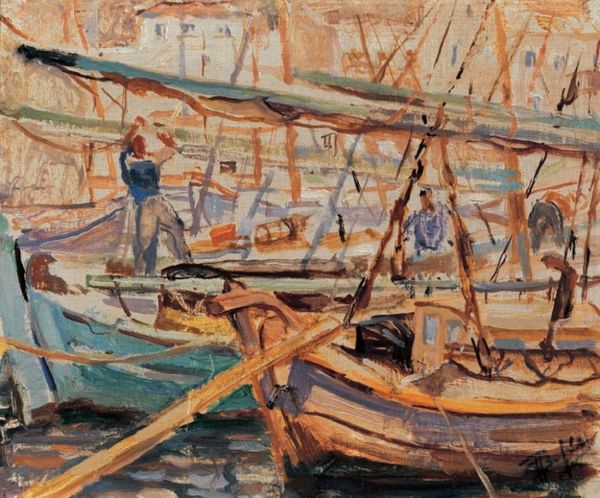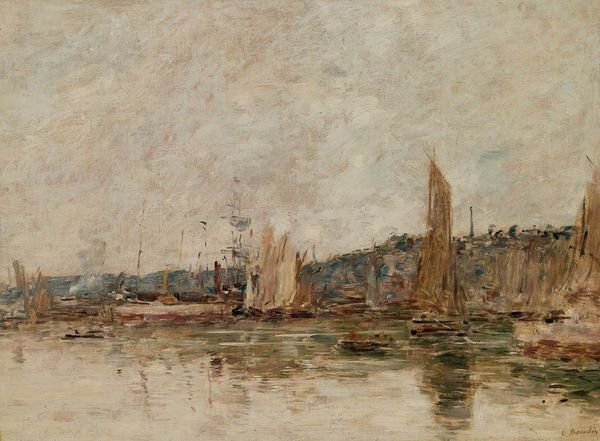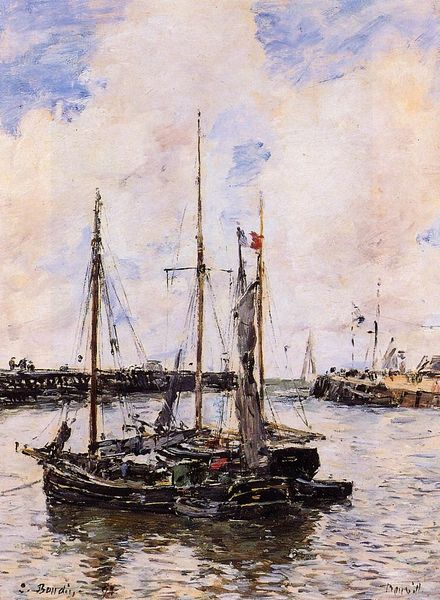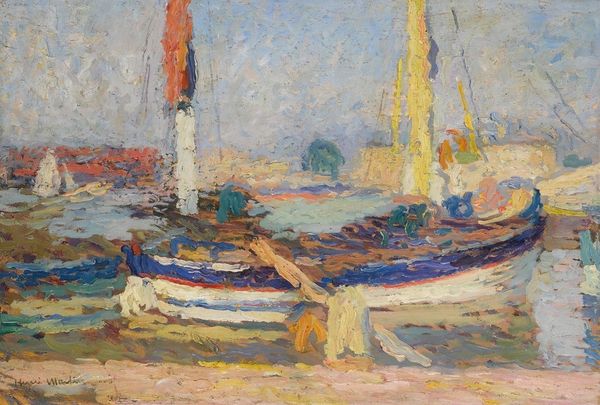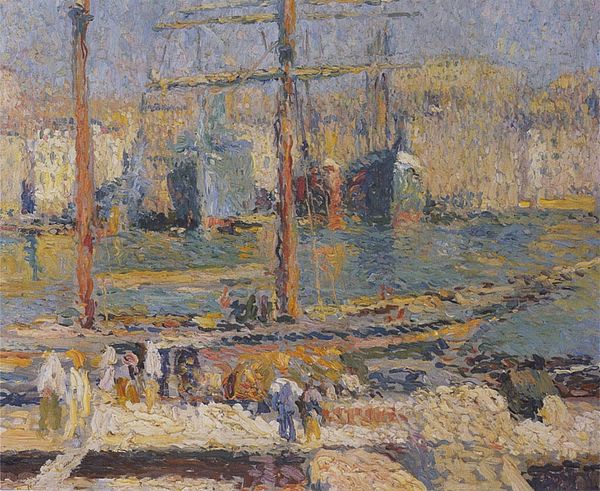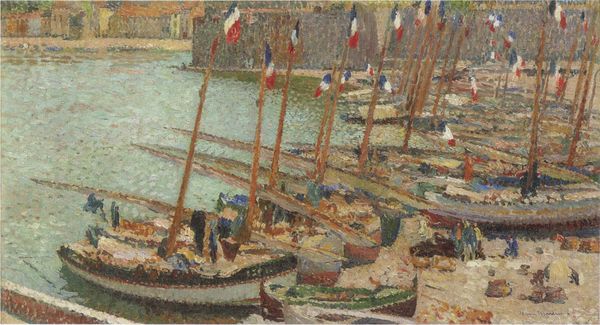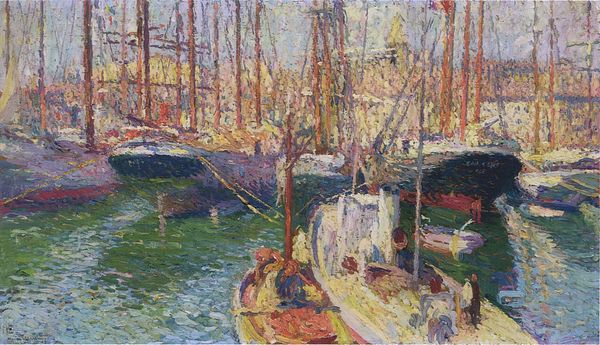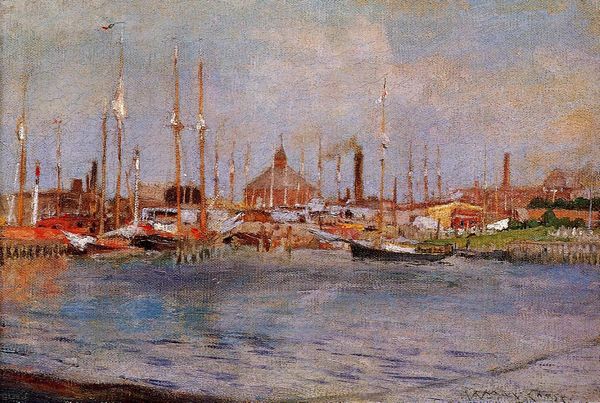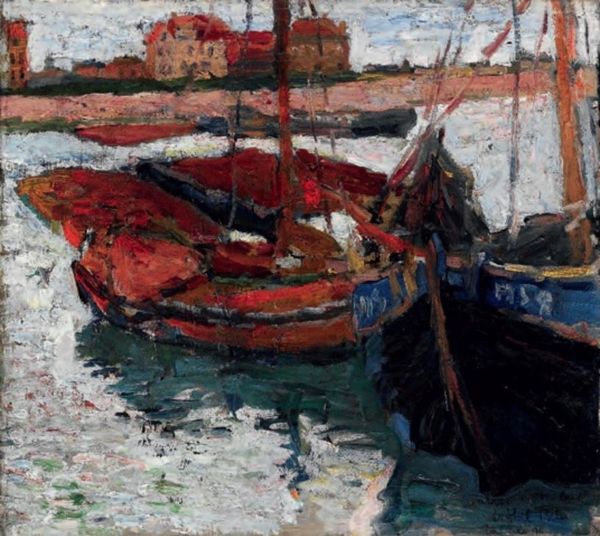
Dimensions: 49 x 62 cm
Copyright: Public domain US
Curator: Pyotr Konchalovsky’s "Arkhangelsk. Ships in port," painted in 1903, offers us a glimpse into the artist's fascination with industrial and maritime landscapes. Editor: My first impression is how the thickly applied paint captures the constant movement of the water. It is this amazing layering that creates a dynamic image of what I can only imagine as the activity around this Russian port. Curator: Konchalovsky was, during this period, gravitating towards post-impressionism. We can see the influence of artists like Monet in the visible brushstrokes and the attention to light and its effects on the scene. He seeks to create something atmospheric and truthful. Editor: What I appreciate about the port as a subject matter is how it sits between places. It’s a site of arrivals and departures and the human drama connected to that is interesting to me. Who is working? Who owns the ships? Where are they headed? I immediately think of the labor required to maintain these ships and what socio-economic class would be subject to this labor. Curator: It’s also interesting to consider this scene as documentation. Ports, especially in the early 20th century, were vital economic hubs. The details Konchalovsky includes tell us a lot about the types of vessels present and the infrastructure that supported them, even informing details around import and export taking place in the port. Editor: And in terms of style, one cannot ignore how Konchalovsky uses visible, loose brushstrokes, so concerned with light and atmosphere, he makes no attempt to beautify the realities of a busy industrial landscape. The aesthetic choices, as much as the subject, situate the politics of art. Curator: It leaves one to wonder about the perspectives of the working-class people versus the owner class, in an interesting dynamic within this image. Editor: Absolutely, there is so much that can be said about it as both a portrait of place and time. I love how the artist allows the subject matter to breathe in a particular historical and social context.
Comments
No comments
Be the first to comment and join the conversation on the ultimate creative platform.
